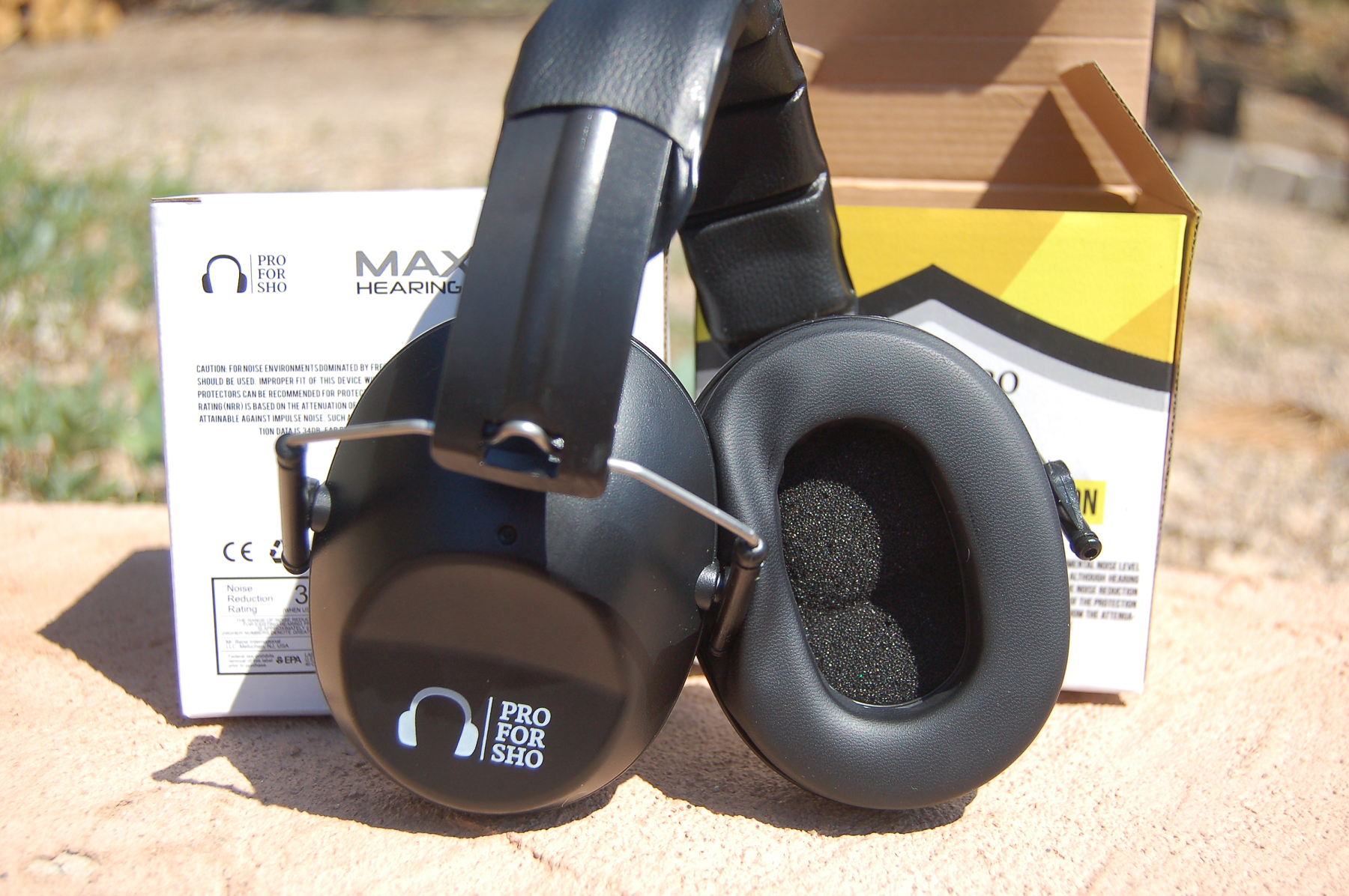To be honest, when I saw Pro For Sho hearing protection advertising a 34dB Noise Reduction Rating (NRR) I thought there was no way. Being an industrial safety professional for 2 decades and a shooter for over 3 decades, has gained me an intimate knowledge of personal protective equipment, particularly hearing protection, and I have never before seen hearing protection boasting a 34 dB NRR.
Noise reduction ratings are a bit misleading. They reflect the results of laboratory testing designed to predict the protection factor achievable by 98% of users wearing hearing protection correctly in a laboratory setting, and while it is possible to get the full NRR in the field, OSHA applies an adjustment formula for the different types of hearing protective devices to predict what an industrial worker’s level of protection will likely be. Typically, people don’t get the full suppression factor from their hearing protection because they don’t wear it correctly. Physical differences between workers can cause variations in the fit. Hair, safety glasses, hat brims, or anything else that interferes with a complete seal around the ear will reduce the effectiveness of the hearing protection. I have personally watched hearing protection tests on people who thought they knew how to wear earplugs correctly that indicated they were getting less than half of the advertised NRR. While other people wearing the same type of plug got results a few dB OVER the NRR.
To account for these differences, and since most sound measurements are taken on the “A-weighted scale” a correction factor of 7dB must be applied. That means even a good earplug rated at 33dB, worn correctly, may give you that full reduction, but OSHA only allows employers to take credit for the listed NRR minus 7dB, now that 33dB plug is only effectively giving 26dB of protection. What about double hearing protection? An employer is allowed to add 5dB for plugs and muffs worn together, so that 33dB plug and a set of muffs over the top is only giving (on average) a total of 31 dB of protection. This means if you are firing an M-4 at 165 dB, and you are getting the maximum attenuation allowed for this protection (31dB), we subtract 31 from 165 and get 134 dB – still damaging, by the way.
Let’s add one more complicating factor: sound can enter the inner ear by being conducted through the skin and bones in the head, which is why – even if you were able to seal your ears off completely, some noise would still get in. This anatomy has a noise attenuation value which varies depending on the person, but on average, it amounts to about 50-60 dB tops. Noise reduction ratings are also designed for continuous noise, not “impulse noise” like gunfire. Caveat Emptor, and this goes for all hearing protection, not just these, you can get a level of protection up to the NRR. Full noise attenuation isn’t guaranteed. Now you can see why I had a hard time believing claims of 34dB NRR earmuffs, and also why I am a big fan of sound suppressors.

Next came the performance test, I tried out this hearing protection myself, firing AR’s and .30 caliber bolt guns – both suppressed and unsuppressed. My ears definitely aren’t the most calibrated or scientific instrument for judging noise suppression anymore, but I can say they “seemed effective.”
Other than performance, the Pro for Sho earmuffs are an un-amplified muff. They aren’t fancy and at the price-point, that’s OK. They are a slim, “shooter’s cut” earmuff that should be equally at home for pistol and long-gun shooting. They adjust easily and should fit the majority of users, they also fold to save space in the range bag. The headband is padded and comfortable.
The earcups are non-removable or replaceable, which probably contributes to the noise reduction rating and helps keep prices down.
For instructors, I think you would be well advised to purchase about a dozen pair of these and throw them in a duffel bag with some extra eye protection to accommodate students who don’t own (or forgot to bring) their PPE to the range. Sure, foam plugs are cheaper, but they contribute to trash on the range and most students don’t wear them correctly or keep taking them out to listen to instruction on the range.
RATINGS:
Price 5/5
Performance 5/5 – Backed up by testing data!
Comfort 4.5/5 – I would like to see these available with Gel earcups – then again that would raise the price.
Durability 4.5/5 – Simple construction should mean long service life, but there are no replaceable parts, so when the earcups freeze or dry-out and crack, pitch them.
SCORE: 19/20
OVERALL RATING: 95% EXCELLENT
I received this product as a courtesy from the manufacturer via Spotter Up so I could test it and give my honest feedback. I am not bound by any written, verbal, or implied contract to give this product a good review. All opinions are my own and are based off my personal experience with the product.
*The views and opinions expressed on this website are solely those of the original authors and contributors. These views and opinions do not necessarily represent those of Spotter Up Magazine, the administrative staff, and/or any/all contributors to this site.

